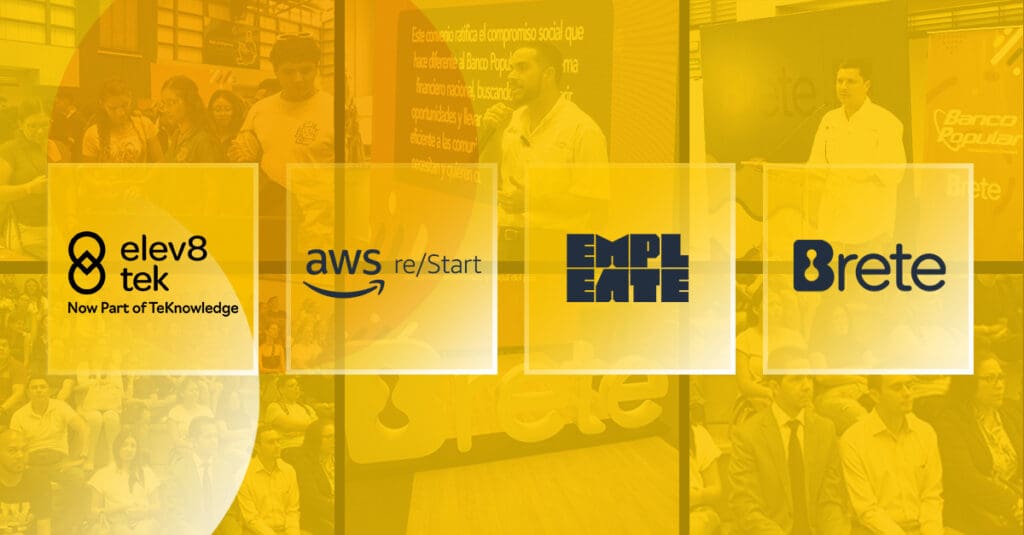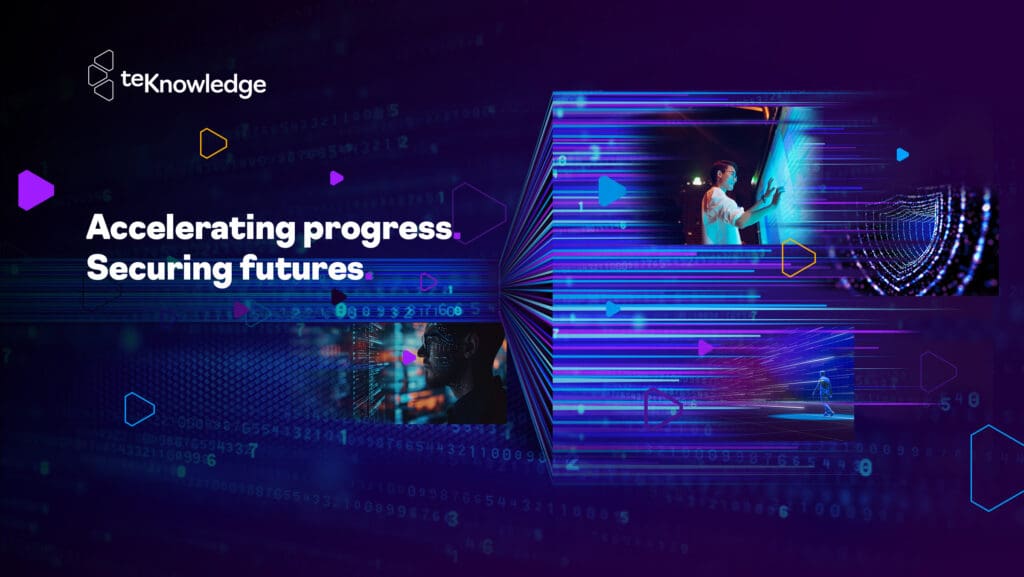Transitioning to a digital economy has signaled the start of the Fourth Industrial Revolution, but a big digital skills gap is widening fast.
Companies are finding that emerging talent with the critical digital skills they need is in short supply. Still, there is something every business can do to thrive in this new world – designing training that invests in the employees they already have by reskilling, upskilling, and building a culture of learning in the workplace, starting at the top. This approach not only helps save on the cost (and hassle) of hiring and training new employees but also ensures that existing employees are equipped with the necessary skills to adapt to the changing digital landscape.
By incorporating various learning resources such as webinars, videos, and podcasts, businesses can provide their employees with diverse educational opportunities.
Employees and employers agree: Learning is the answer
The good news is that workers are as invested in acquiring these essential digital skills as their future employers. Lorman reported last year that 74% of employees surveyed are eager to pursue training and expand their skills.
So even though recruitment alone may not close the skills gaps many organizations face, taking the time to train current and future employees as an alternative dovetails perfectly with future recruitment efforts.
- Monster’s 2022 Future of Work report showed that 87% of employers were” struggling to fill positions because of a skills gap.”
- 91% of managers believe that employee learning programs can “help close skills gaps on their teams,” according to LinkedIn’s 2021 Workplace Learning Report.
- In 2021, Clear Company reported that 68% of employees felt that training and development is an essential firm policy.
The Training Strategy You Need to Evolve
Employee training and development programs are necessary for organizations to remain agile and competitive. The next generation of training programs must center primarily around time-to-value, that is, how quickly an employee can complete the training cycle to role readiness. To achieve this, we must re-examine the assumptions of our current learning models. While most formal schooling is based on information memorization and recall, digital skills require continuous practical application beyond the initial instruction to be adequately adopted.
Moreover, as the topics of mental health and cognitive development garner more interest, investment, and research, it is becoming clear that the most effective training is also adaptable to the student’s needs. Employee development plans, which may include skill development within the current role and earning a certification, play a crucial role in achieving company goals.
- 59% of Learning and Development professionals named upskilling and reskilling the top training priority in 2021.
- Responses to the Key Blanchard 2021 Trends Report indicated that learner engagement was the top area of improvement for virtual training last year.
- 91% of employees desire personal and targeted workplace training.
At Elev8, we believe in a holistic approach to training, utilizing blended learning techniques, physical and virtual classrooms to ensure every opportunity is gained when leveling up our clients’ employees. We create interactive learning environments to simulate the real-world use of skills, and students can troubleshoot practical obstacles with the support of an instructor. We also recommend ongoing coaching to reinforce specific training objectives in the future.
Creating a foundation for a successful training strategy
Understanding the importance of adequate training is one thing, but implementing it is another, and that starts with a firm’s leadership. In a digitally focused enterprise, executives should already be focused on developing an internal talent pipeline to secure their company’s place for the future. Once a culture of learning is established, creating a timeline that balances the resources devoted to training programs against the immediate and future needs of the organization is vital.
As with any other project, measurable deadlines and goals must be set, which creates a map that will guide the reskilling and upskilling of your workforce. It can be valuable to develop a skills matrix that charts which individuals already possess the sought-after skills or can step into empty roles.
Any subsequent training programs can prioritize those employees whose current expertise would result in the quickest time-to-value from their continuing education. Your employees are likely to fall into one of three groups in this context:
- Those whose roles are growing and require them to obtain new skills to sustain them.
- Those who will migrate to new positions and need to upgrade their current skills or learn new ones, or
- Those for whom no new position is yet visible but who wish to expand their skill set regardless.
The needs and challenges of each of these categories will be distinct but only with crossover. Define which of your employees fits within each group and tailor their skilling journey accordingly.
What is an Employee Training Roadmap, and Why is it Important?
A training roadmap is a strategic plan that outlines the necessary steps and milestones for employees to acquire new skills and knowledge. It is essential because it provides a clear path for individuals to follow, ensures consistency in training efforts, and aligns training initiatives with business goals. A training roadmap is a vital tool in developing and upskilling your workforce. By creating a skills matrix, you can identify which employees already possess the desired skills or have the potential to fill vacant positions. This allows you to prioritize training programs and focus on those individuals who can quickly add value through further education.
How to Create a Training Roadmap to Develop Your Internal Talent Pipeline
Establishing a learning culture within your organization is crucial for securing your company’s place in the digital future. Once this culture is in place, it’s essential to create a structured sequence of training activities, also known as a training roadmap or learning path, that aligns with your organization’s immediate and future needs. Here are some steps to help you create a practical roadmap that builds on the last to achieve a collective value more significant than the sum of its parts.
1. Set Measurable Deadlines and Goals: Identify and create an employee training template with specific milestones and targets to achieve at different process stages. Additionally, it can be helpful to develop a list of resources that will move the employee toward their professional and personal goals.
2. Assess Current Skill Gaps: Before designing the training roadmap, it’s crucial to assess the current skill gaps within your organization. Conduct employee assessments or surveys to identify the areas where additional training is needed. This will help you understand which employees fall into each of the three categories mentioned earlier.
3. Tailor Training Programs: Once you have identified the skill gaps, tailor your training roadmap to meet the specific needs of each group, including your leadership team. For those whose roles are growing, focus on providing advanced training in the relevant areas to enhance their expertise further and develop their leadership skills. For those in stable positions, offer training that can broaden their skill set and make them more versatile. For employees whose roles may become redundant, provide training to transition into new roles within the organization, guided by their team leaders.
4. Provide Continuous Learning Opportunities: In addition to targeted programs, creating a culture of continuous learning within your organization is essential. Encourage employees to pursue self-paced learning through online courses, webinars, and conferences. Offer incentives for employees who actively seek out new knowledge and skills.
5. Monitor Progress and Evaluate: Regularly monitor the progress of your programs and evaluate their effectiveness. Set up key performance indicators (KPIs) to track the impact of the training on employee performance and job satisfaction. Collect feedback from participants to identify areas for improvement and make necessary adjustments to your roadmap.
What Does a Well-Designed Employee Training Roadmap Look Like?
A well-designed employee training roadmap considers each employee’s specific needs and goals. It includes a clear outline of the skills and knowledge that need to be acquired, along with the necessary timeframes, resources, and milestones for achieving them. It also considers any potential crossover between different groups of employees, ensuring that training efforts are optimized and efficient. A good roadmap incorporates employee, manager, and HR professionals’ feedback to ensure that it aligns with individual and organizational objectives. Overall, a well-designed training roadmap is comprehensive and flexible.
How Can a Training Roadmap Help Improve Employee Performance?
A training roadmap can help improve employee performance in several ways:
- It provides employees with a clear path to follow, eliminating confusion and uncertainty about their development opportunities. This clarity allows employees to focus on acquiring the necessary skills and knowledge to excel in their roles.
- A training roadmap ensures consistency in training efforts across the organization, promoting standardized practices and skillsets. This consistency leads to increased efficiency and effectiveness in job performance.
- By aligning training initiatives with business goals, a training roadmap helps employees develop the most relevant and valuable skills for the organization, resulting in improved overall performance.
A training roadmap can help improve employee performance by providing a clear path and goals for professional development. It ensures that employees receive the necessary skills and knowledge to excel in their roles, resulting in increased productivity, job satisfaction, and overall performance.
How to Create an Employee Training Template
Creating a roadmap for employee development requires a template. It is essential in designing a comprehensive training program for your organization. Here are some steps to follow:
1. Identify the learning objectives: Identify the critical skills or knowledge your employees need to learn. This will help you design a program that is relevant and effective.
2. Determine the training format: Decide on the program’s design, such as online courses, workshops, or on-the-job training.
3. Create a timeline: Develop a timeline for the program, including the start and end dates and the duration of each training session.
4. Choose the training materials: Select the appropriate materials, such as videos, presentations, or handouts, to help your employees learn the necessary skills and knowledge.
5. Evaluate the training program: Continuously evaluate the training program to ensure it meets the learning objectives and delivers the desired results.
What are Some Common Challenges in Implementing a Training Roadmap?
- Employee resistance to change: Employees may resist new training programs due to fear of the unknown, lack of motivation, or skepticism about the benefits. It is essential to address these concerns and communicate the value of the training to overcome resistance. to change from employees
- Lack of resources and support: This includes insufficient budget, limited access to training materials or technology, and a lack of managerial buy-in. It is essential to secure adequate resources and obtain support from key stakeholders to ensure successful implementation.
- Sustaining employee engagement: Employees may lose interest or become disengaged if the program is not engaging and irrelevant to their job roles. You can design interactive and practical training sessions that are tailored to their respective functions.
- Limited time availability and scheduling conflicts: Employees may have busy work schedules or conflicting priorities, making it difficult to allocate dedicated time for training. It is essential to consider flexible training options and provide opportunities for employees to attend sessions at their convenience.
- Tracking progress and measuring effectiveness: Proper tracking mechanisms and evaluation methods make it easier to gauge if the training is achieving its intended goals. Implementing regular assessments and feedback mechanisms can help address this challenge.
Don’t Forget Your Power Skills
Alongside the technical skills needed to perform specific roles, the ability to navigate through social situations is also vitally important. At Elev8, we refer to this ability as “power skills.” Power skills are “soft skills” or “human skills” that determine how we act and interact with others. Power skills related to leadership, teamwork, communication, emotional intelligence, collaboration, active learning, and others are essential to how we work today and closely tied to a company’s success.
Our unique approach follows a five-step process starting with a deep understanding of your digital challenges and business objectives. This enables us to deliver personalized, role-based training programs (teaching both technical and power skills) tailored to your unique business needs.
Get in touch to find out how we can help you create a roadmap for the future of your organization and the people who make it work.




